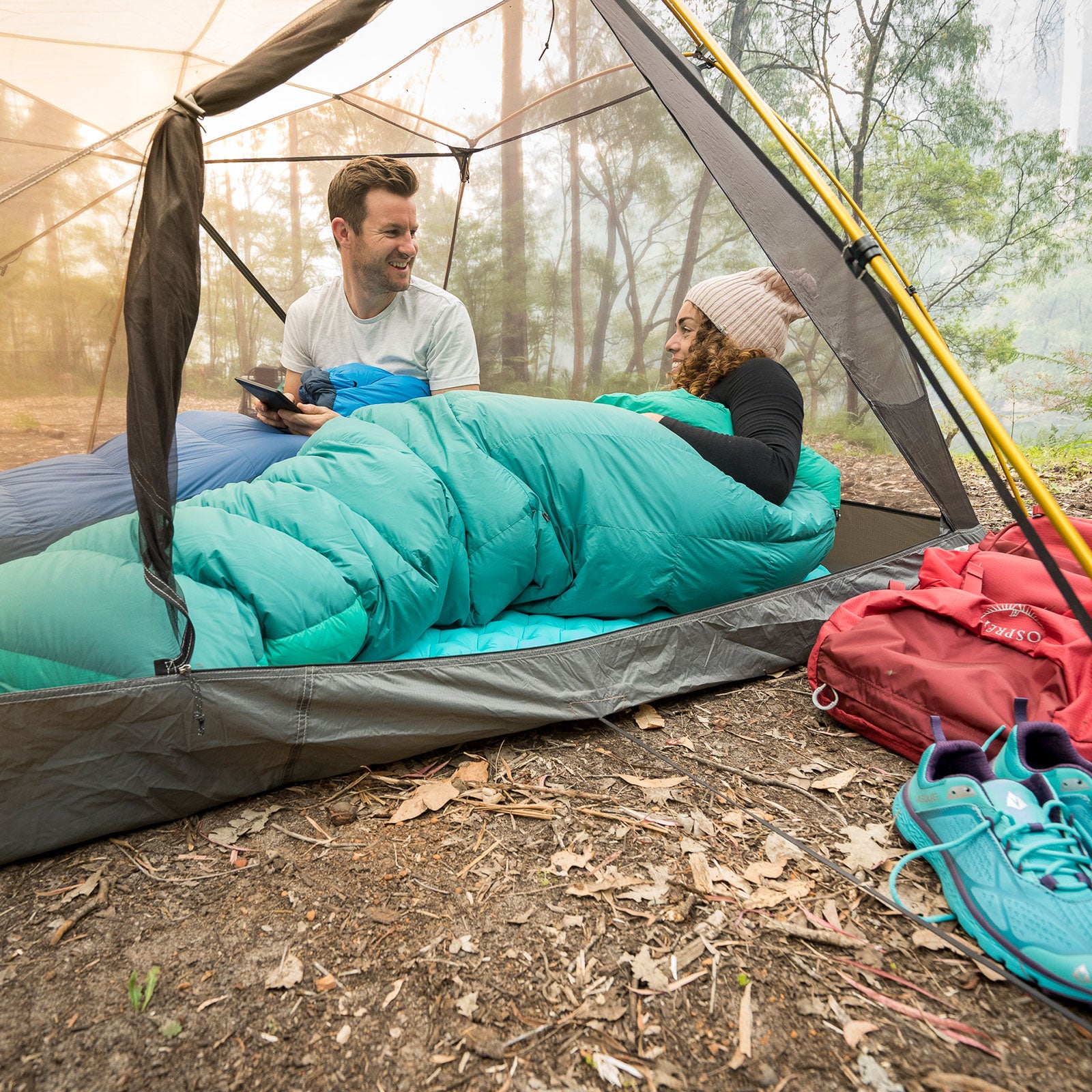Uncategorized
Camping Sleeping Pads: How to Choose the Best One for Comfort
A good night’s sleep is essential for a successful camping trip, but sleeping on the hard, uneven ground can make it difficult to get the rest you need. That’s where a camping sleeping pad comes in. It provides the cushioning and insulation necessary to keep you comfortable and warm while you sleep under the stars. With so many options available, choosing the best one can be a challenge. In this guide, we’ll walk you through the factors to consider when selecting a sleeping pad for camping and how to find the perfect one for your needs.
1. Consider Your Sleeping Position and Comfort Needs
One of the first things to think about when choosing a camping sleeping pad is your sleeping position. Whether you sleep on your back, side, or stomach will influence the type of pad that works best for you.
- Back Sleepers: If you tend to sleep on your back, you’ll need a pad that provides sufficient support for your spine and keeps you comfortable throughout the night. Look for sleeping pads with a higher R-value (more on this below) and a thicker design for added cushioning.
- Side Sleepers: Side sleepers may need a thicker pad or one with extra cushioning to avoid pressure points, particularly on the hips and shoulders. Look for options that are at least 3 inches thick or more.
- Stomach Sleepers: Stomach sleepers typically prefer a firmer pad to prevent sinking too deep into the mattress. A thinner or firmer sleeping pad will provide the right amount of support.
Tip: Always test the pad before your trip if possible to ensure it meets your comfort needs.

2. R-Value: Understanding Insulation and Warmth
The R-value of a camping sleeping pad refers to its thermal resistance, or how well it insulates you from the cold ground. A higher R-value means more insulation and warmth, while a lower R-value is suitable for warmer conditions. When choosing a sleeping pad, consider the season and the weather conditions you expect during your trip:
- R-value 1-2: Best for summer or warm weather camping, where insulation isn’t as critical.
- R-value 3-4: Ideal for spring and fall trips, where temperatures can fluctuate and you need moderate insulation.
- R-value 5 and above: Recommended for winter camping or colder conditions where warmth and insulation are essential to avoid getting cold during the night.
Tip: If you plan to use your sleeping pad for multiple seasons, consider a pad with an R-value in the mid-range (3-4) for versatility.

3. Pad Thickness and Cushioning
Thickness plays a significant role in your overall comfort. The thicker the sleeping pad, the more cushioning it provides between you and the hard ground, which can help relieve pressure points.
- Thin Pads (1-2 inches): These are lightweight and compact, making them great for backpacking trips where space and weight are priorities. However, they may not offer as much cushioning, especially on rough terrain.
- Moderately Thick Pads (2-4 inches): These provide a good balance between comfort and portability. They’re suitable for most campers and offer enough cushioning for a restful night’s sleep without sacrificing too much space or weight.
- Thick Pads (4+ inches): Ideal for car camping or when comfort is your top priority. These pads provide excellent cushioning but can be bulkier and heavier, making them less suitable for long hikes.
Tip: If you’re backpacking and need to save weight, choose a thinner pad, but if you’re camping at a campsite or car camping, consider a thicker pad for superior comfort.

4. Inflatable vs. Foam Pads: Which is Best for You?
Camping sleeping pads generally come in two main types: inflatable and foam. Each has its pros and cons depending on your needs.
- Inflatable Pads: These pads are lightweight, compact, and easy to store, making them a popular choice for backpackers. They provide excellent comfort and insulation but require you to inflate them, either manually or with a pump. Some inflatable pads include air chambers that enhance cushioning and stability.
- Pros: Lightweight, compact, customizable firmness, comfortable
- Cons: Can puncture or leak, requires inflation, less durable on rough terrain
- Foam Pads: Foam pads are less prone to punctures, making them more durable than inflatable pads. While they’re bulkier and heavier, they offer consistent comfort and insulation. Some foam pads are foldable for easier storage.
- Pros: Durable, no inflation needed, affordable, compact when folded
- Cons: Heavier, bulkier, less comfortable than inflatable pads
Tip: If durability and simplicity are your priorities, a foam pad might be the way to go. For lightweight and high-comfort options, an inflatable pad is a better choice.
5. Packability and Weight
If you’re backpacking or hiking, packability and weight become crucial factors when selecting a sleeping pad. The lighter and more compact the pad, the easier it will be to carry.
- Ultralight Pads: These are typically thinner and made from lightweight materials. They are perfect for those who need to minimize weight, but they may sacrifice some comfort.
- Compact Pads: Some inflatable pads are designed to pack down into small sizes, making them ideal for backpackers who need to save space in their pack. Look for pads with a smaller packed size and lighter weight for easy portability.
Tip: If you’re planning on long treks, look for a pad that is both lightweight and compact but still offers a comfortable sleep experience.
6. Additional Features to Look For
- Built-in Pumps: Some inflatable pads come with built-in pumps or self-inflating mechanisms to make setup quicker and easier.
- Antimicrobial Coatings: Pads with antimicrobial treatments help prevent the buildup of bacteria and odors, keeping your pad fresh and hygienic during extended trips.
- Adjustable Firmness: Some inflatable pads allow you to adjust the firmness by adding or releasing air, which can be beneficial for personalized comfort.
Conclusion
Choosing the best camping sleeping pad is all about finding the right balance between comfort, insulation, weight, and durability based on your specific camping needs. Consider factors like sleeping position, R-value, thickness, and pad type (inflatable or foam) to ensure a good night’s rest during your outdoor adventures. By selecting the right pad, you’ll be able to sleep comfortably and wake up feeling refreshed, ready to take on the next day’s adventures. Whether you’re hiking through rugged terrain or car camping in a cozy spot, the right sleeping pad can make all the difference in your camping experience.
Investing in a good camping sleeping pad is an investment in your comfort and overall enjoyment of the outdoors!

